Search Result
Results for "
buffering agent
" in MedChemExpress (MCE) Product Catalog:
23
Biochemical Assay Reagents
7
Isotope-Labeled Compounds
| Cat. No. |
Product Name |
Target |
Research Areas |
Chemical Structure |
-
- HY-23430
-
-
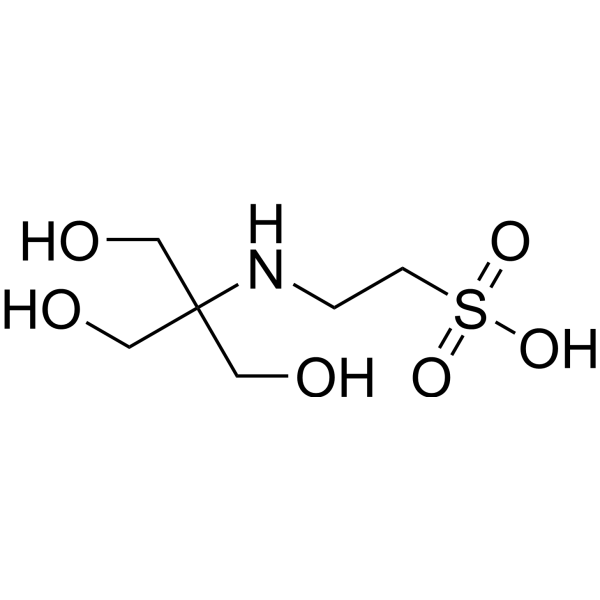
-
- HY-23430A
-
|
|
Biochemical Assay Reagents
|
Others
|
|
TES sodium is a buffering agent (pKa=7.550 at 25°C). TES sodium is one of the Good's buffers, the buffer capacity ranging pH 6.8-8.2 .
|
-

-
- HY-D0859A
-
|
|
Biochemical Assay Reagents
|
Others
|
|
MOPS sodium salt is commonly used as a buffering agent in biology. MOPS buffer can maintain the pH of mammalian cell culture media .
|
-
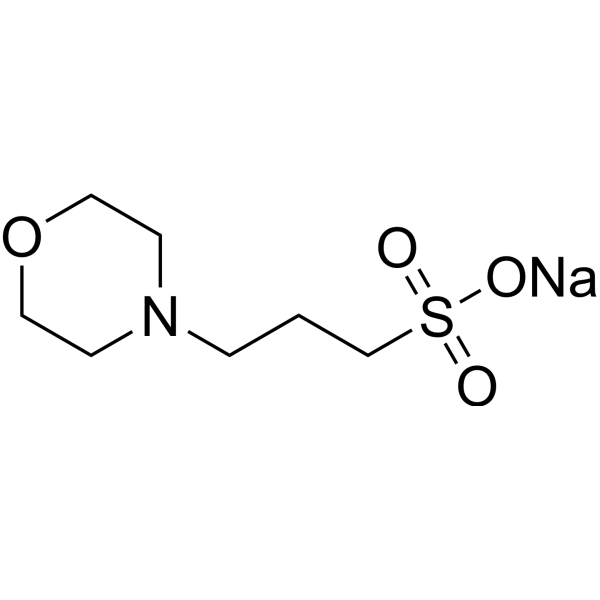
-
- HY-W509915
-
-
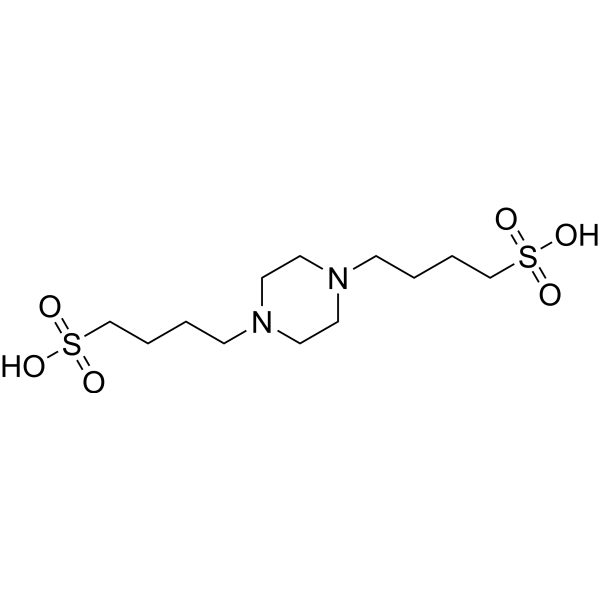
-
- HY-N12840
-
|
|
Others
|
Metabolic Disease
|
|
Logmalicid B is an iridoid glycoside compound that can be isolated from Cornus officinalis and can be used in diabetes research .
|
-

-
- HY-W414406
-
|
|
Biochemical Assay Reagents
|
Others
|
|
CABS is a zwitterionic piperazine buffer reagent, which can be used as a buffer reagent for wetting agents, pesticide emulsifiers, and dispersants, and has been used in fluorescent dyeing applications .
|
-
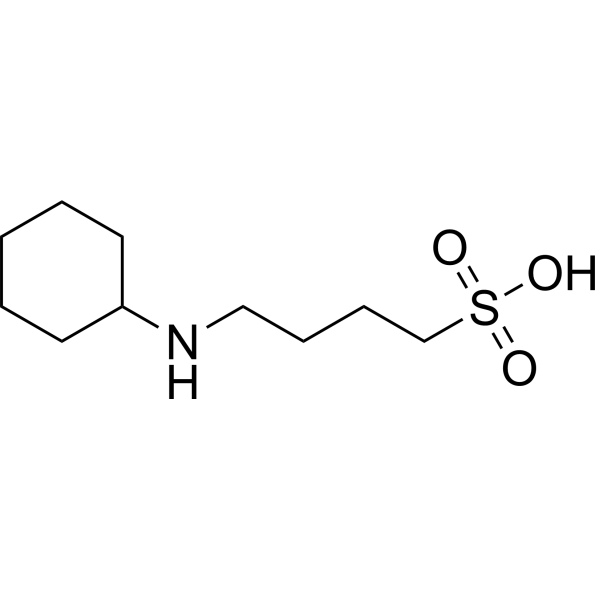
-
- HY-23430S
-
|
|
Isotope-Labeled Compounds
|
Others
|
|
TES-d15 is the deuterium labeled TES[1]. TES is a buffering agent (pKa=7.550 at 25°C). TES is one of the Good's buffers, the buffer capacity ranging pH 6.8-8.2[2][3].
|
-
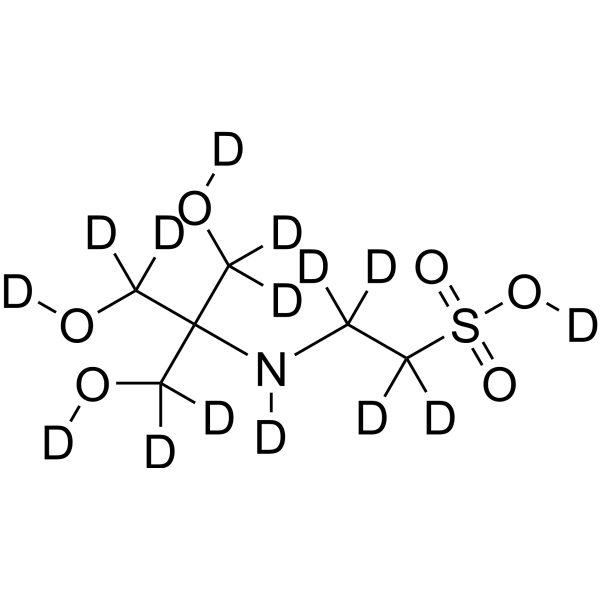
-
- HY-D0858B
-
|
2-Morpholinoethanesulphonic acid sodium salt
|
Biochemical Assay Reagents
|
Others
|
|
MES (2-Morpholinoethanesulphonic acid) sodium salt is a buffering agent in biology and biochemistry. MES sodium salt is one of the Good's buffers, the buffer capacity ranging pH 5.5-7.0. MES sodium salt is broadly used to regulate pH value for plants culture medium, reagent solution, and physiological experiments .
|
-
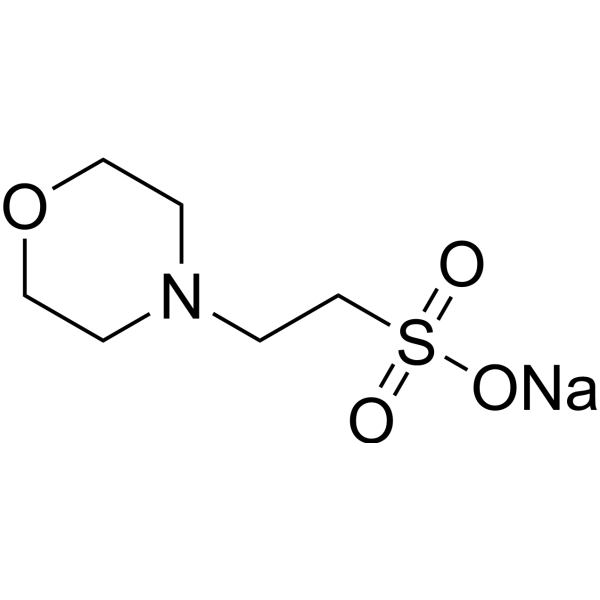
-
- HY-D0858
-
|
2-Morpholinoethanesulphonic acid
|
Biochemical Assay Reagents
|
Others
|
|
MES (2-Morpholinoethanesulphonic acid) is a buffering agent in biology and biochemistry. MES is one of the Good's buffers, the buffer capacity ranging pH 5.5-7.0. MES is broadly used to regulate pH value for plants culture medium, reagent solution, and physiological experiments .
|
-
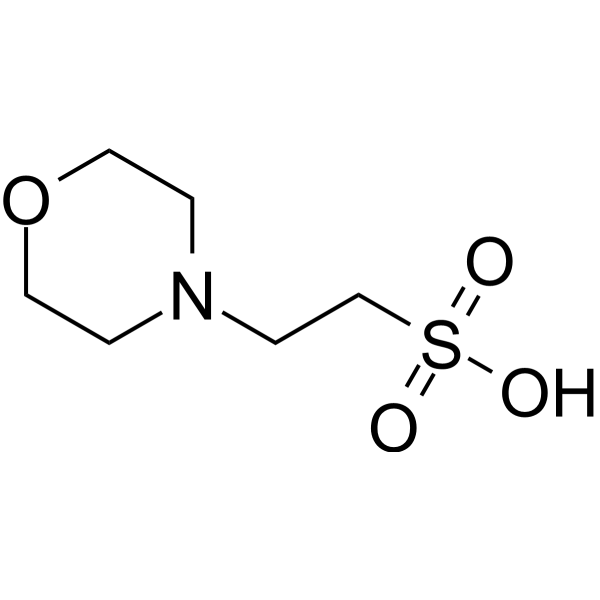
-
- HY-D0858A
-
|
2-Morpholinoethanesulphonic acid monohydrate
|
Biochemical Assay Reagents
|
Others
|
|
MES (2-Morpholinoethanesulphonic acid) monohydrate is a buffering agent in biology and biochemistry. MES monohydrate is one of the Good's buffers, the buffer capacity ranging pH 5.5-7.0. MES monohydrate is broadly used to regulate pH value for plants culture medium, reagent solution, and physiological experiments .
|
-
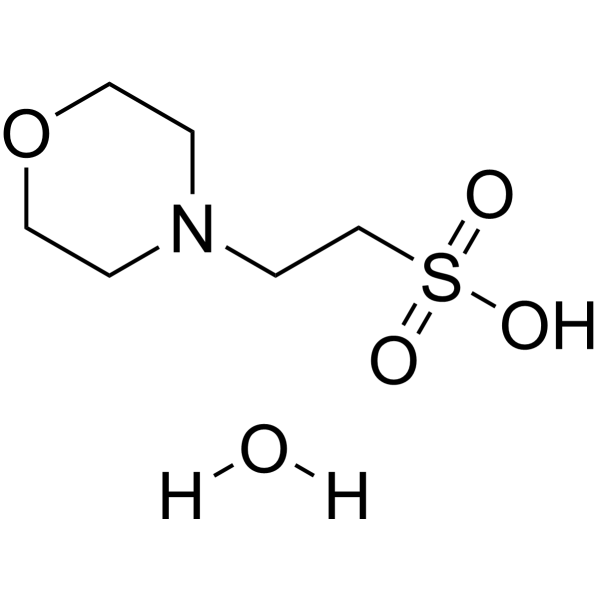
-
- HY-D0858E
-
|
2-Morpholinoethanesulphonic acid potassium
|
Biochemical Assay Reagents
|
Others
|
|
MES (2-Morpholinoethanesulphonic acid) potassium is a buffering agent in biology and biochemistry. MES potassium is one of the Good's buffers, the buffer capacity ranging pH 5.5-7.0. MES potassium is broadly used to regulate pH value for plants culture medium, reagent solution, and physiological experiments .
|
-

-
- HY-D0858C
-
|
2-Morpholinoethanesulphonic acid hydrate
|
Biochemical Assay Reagents
|
Others
|
|
MES (2-Morpholinoethanesulphonic acid) hydrate is a buffering agent in biology and biochemistry. MES hydrate is one of the Good's buffers, the buffer capacity ranging pH 5.5-7.0. MES hydrate is broadly used to regulate pH value for plants culture medium, reagent solution, and physiological experiments .
|
-

-
- HY-D0858D
-
|
2-Morpholinoethanesulphonic acid hemisodium
|
Others
|
Others
|
|
MES (2-Morpholinoethanesulphonic acid) sodium is a buffering agent in biology and biochemistry. MES sodium is one of the Good's buffers, the buffer capacity ranging pH 5.5-7.0. MES sodium is broadly used to regulate pH value for plants culture medium, reagent solution, and physiological experiments .
|
-
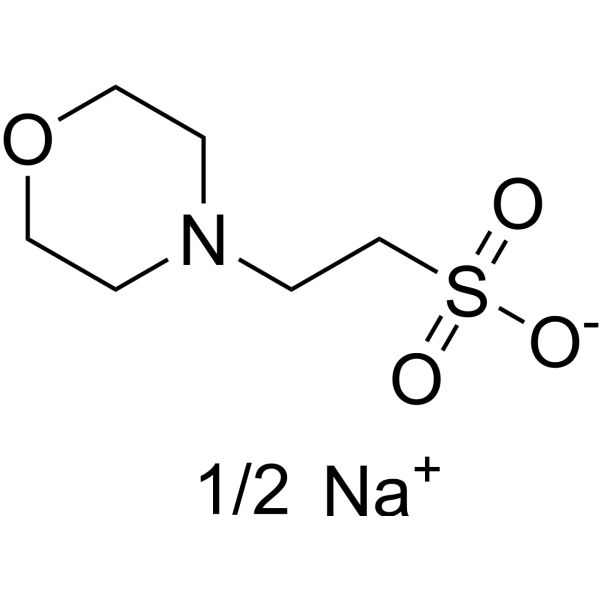
-
- HY-D0859S
-
|
|
Isotope-Labeled Compounds
|
Others
|
|
MOPS-d15 is the deuterium labeled MOPS[1]. MOPS is commonly used as a buffering agent in biology. MOPS buffer can maintain the pH of mammalian cell culture media[2][3].
|
-
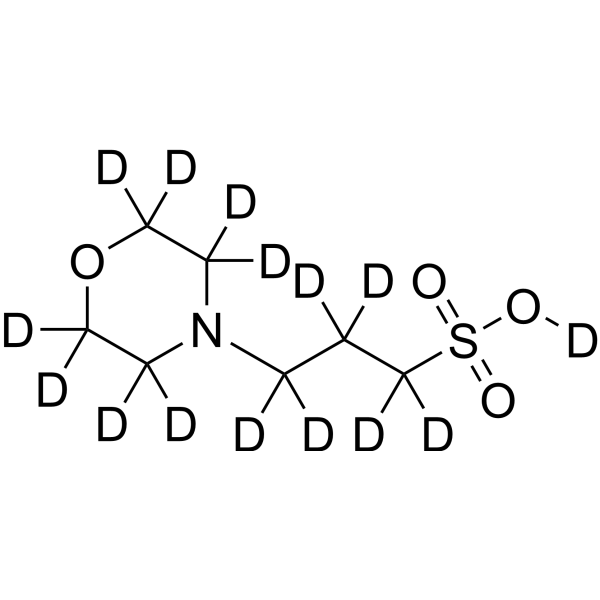
-
- HY-D0875
-
-

-
- HY-W040147
-
-
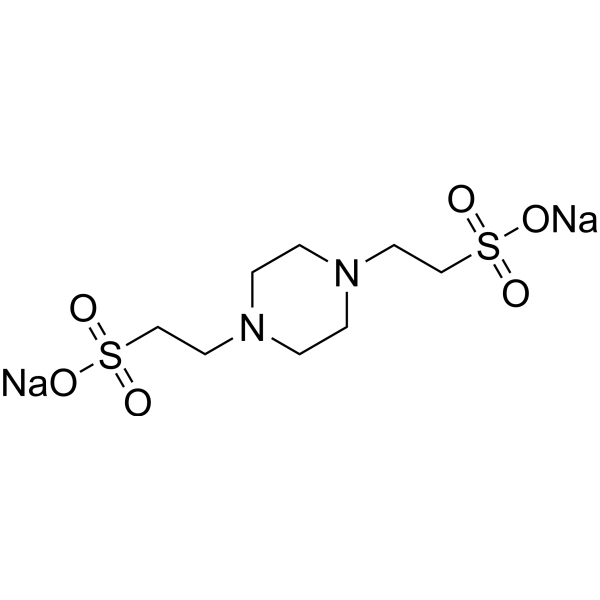
-
- HY-D0858S
-
|
|
Isotope-Labeled Compounds
|
Others
|
|
MES-d13 is the deuterium labeled MES[1]. MES (2-Morpholinoethanesulphonic acid) is a buffering agent in biology and biochemistry. MES is one of the Good's buffers, the buffer capacity ranging pH 5.5-7.0. MES is broadly used to regulate pH value for plants culture medium, reagent solution, and physiological experiments[2][3].
|
-

-
- HY-W008600
-
-

-
- HY-W014792
-
-
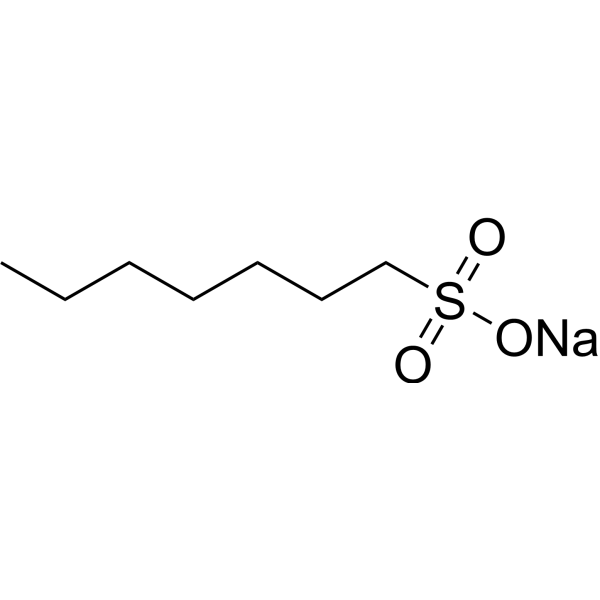
-
- HY-W016091
-
-
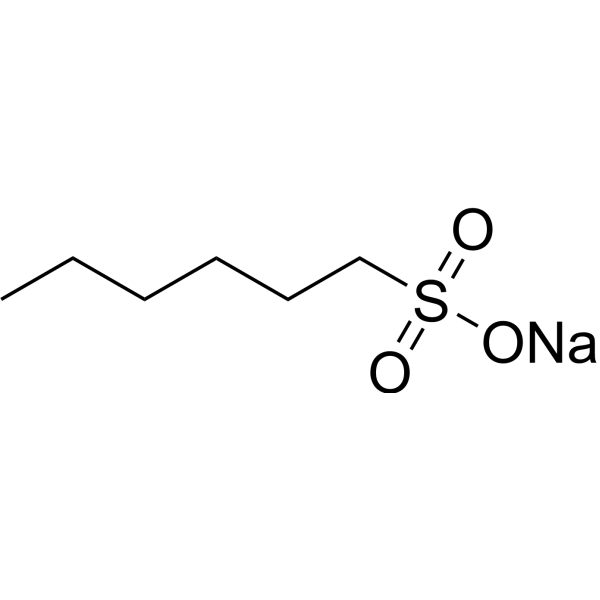
-
- HY-W094510
-
|
|
Biochemical Assay Reagents
|
Others
|
|
Sodium pyrophosphate decahydrate can be as a buffering agent, a chelator and a hydrated salt nucleating agent. Sodium pyrophosphate decahydrate can also be used to a raw material for synthetic laundry scent additives .
|
-
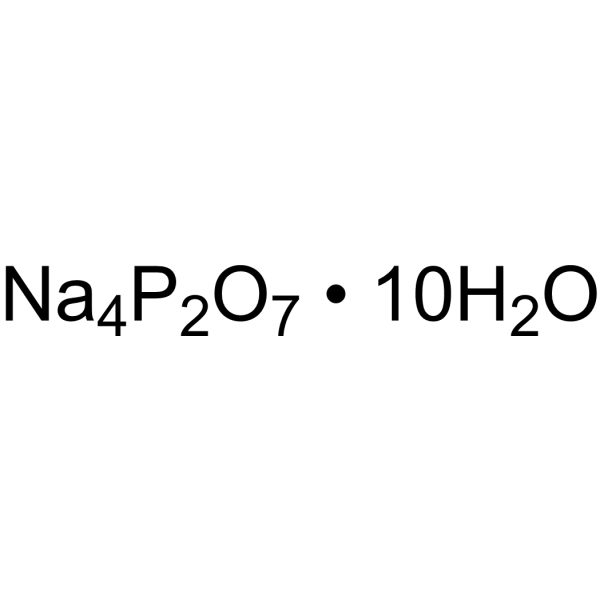
-
- HY-Y0308E
-
|
Disodium hydrogen phosphate, for cell culture
|
Biochemical Assay Reagents
|
Others
|
|
Sodium phosphate dibasic (Disodium hydrogen phosphate), for cell culture can be used as an excipient, such as buffer, chelating agent, can used for cell culture .
|
-
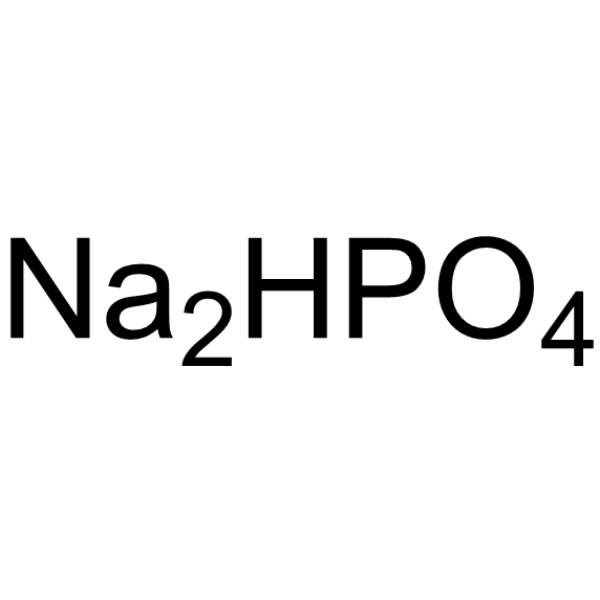
-
- HY-W643127
-
|
N-Tris(hydroxymethyl)methyl-4-aminobutanesulfonic acid
|
Biochemical Assay Reagents
|
Others
|
|
TABS (N-Tris(hydroxymethyl)methyl-4-aminobutanesulfonic acid) is a zwitterionic chemical buffering agent, is broadly applied in cell culture .
|
-
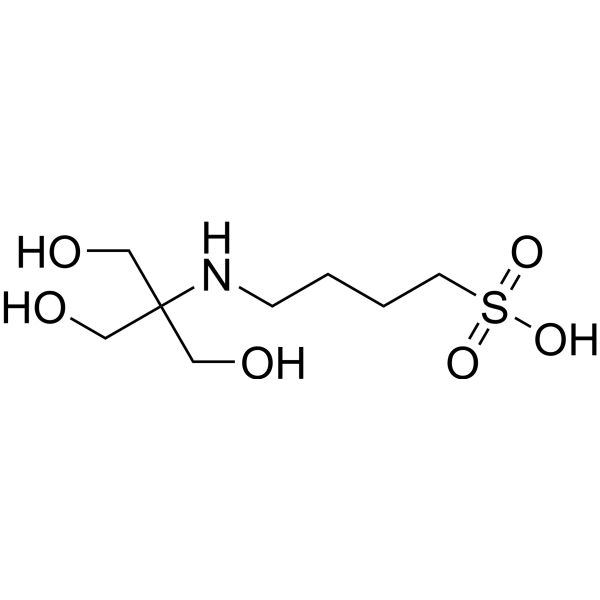
-
- HY-W105704
-
|
|
Biochemical Assay Reagents
|
Others
|
|
HEPBS is a zwitterionic buffering agent with a pH range (7.6-9.0) similar to that of biological systems. HEPBS can be used in the culture of cells .
|
-

-
- HY-D0875S
-
|
1,4-Piperazinediethanesulfonic acid-d18
|
Isotope-Labeled Compounds
|
|
|
PIPES-d18 is the deuterium labeled PIPES[1]. PIPES (1,4-Piperazinediethanesulfonic acid) is an important component of PIPES buffer agent used in biochemistry[2].
|
-

-
- HY-D0871
-
|
N-Cyclohexyltaurine
|
Biochemical Assay Reagents
|
Others
|
|
CHES (N-Cyclohexyltaurine) is a zwitterionic buffer. CHES can bind to hemagglutinin (HA) emulating with sialic acid (SA) and receptor binding site (RBS)-targeting broadly neutralizing antibodies .
|
-
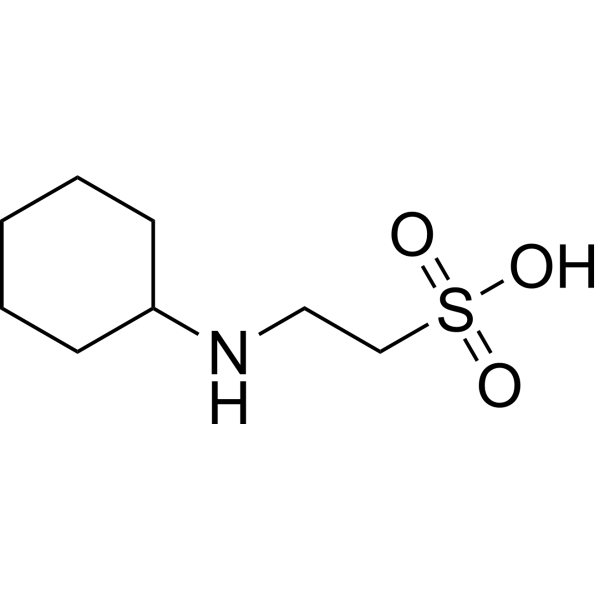
-
- HY-D0857
-
HEPES
2 Publications Verification
|
Biochemical Assay Reagents
|
Others
|
|
HEPES, a nonvolatile zwitterionic chemical buffering agent, is broadly applied in cell culture. HEPES is effective at pH 6.8 to 8.2. HEPES is also a potent inducer of lysosome biogenesis .
|
-
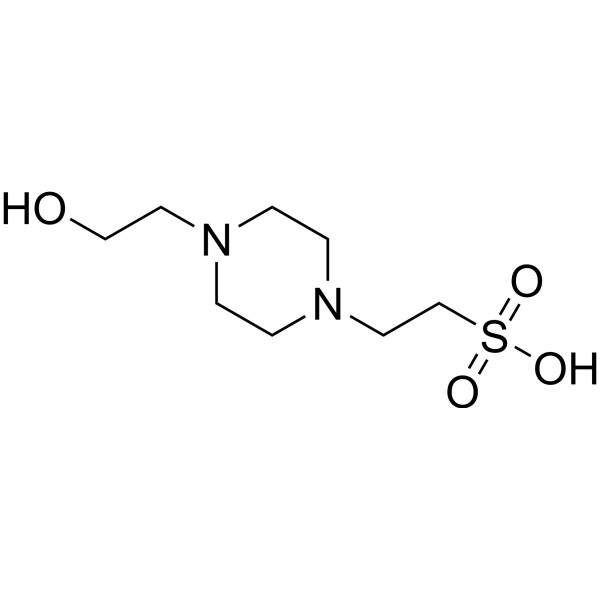
-
- HY-108535
-
|
|
Biochemical Assay Reagents
|
Others
|
|
HEPES sodium, a nonvolatile zwitterionic chemical buffering agent, is broadly applied in cell culture. HEPES sodium is effective at pH 6.8 to 8.2. HEPES sodium is also a potent inducer of lysosome biogenesis .
|
-

-
- HY-B2243
-
|
Sodium phosphate monobasic; Monosodium dihydrogen orthophosphate; Monosodium phosphate
|
Biochemical Assay Reagents
|
Others
|
|
Dihydrogen monosodium phosphate (Monosodium phosphate) is an inorganic salt compound commonly used in industry and laboratories. It can be used as a buffer, nutritional supplement, cleaning agent, etc., and plays a role in certain metal processing, pharmaceutical and chemical industries. In addition, Dihydrogen monosodium phosphate can also be used in the field of water treatment and environmental protection, for example as a purifying agent or precipitating agent for solutions.
|
-
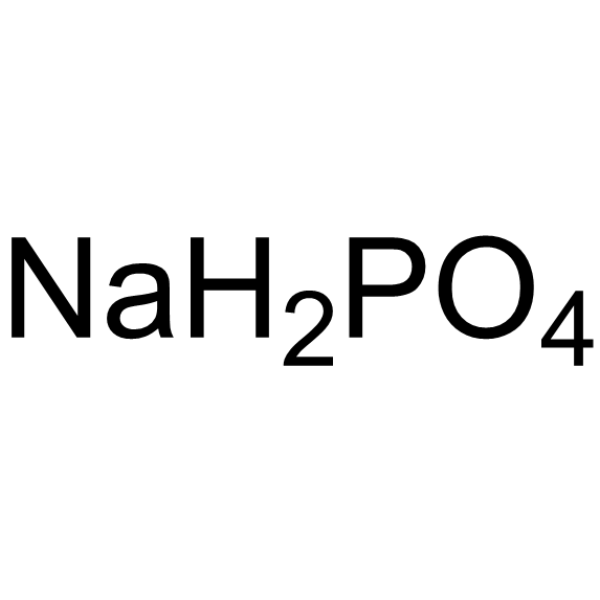
-
- HY-D0873
-
|
EPPS
|
Amyloid-β
|
Neurological Disease
|
|
HEPPS (EPPS) is a buffering agent with the useful pH range from 7.3 ~ 8.7. HEPPS reduces Aβ-aggregate-induced memory deficits and rescues cognitive deficits in mice. EPPS is orally active and penetrates the blood-brain barrier .
|
-
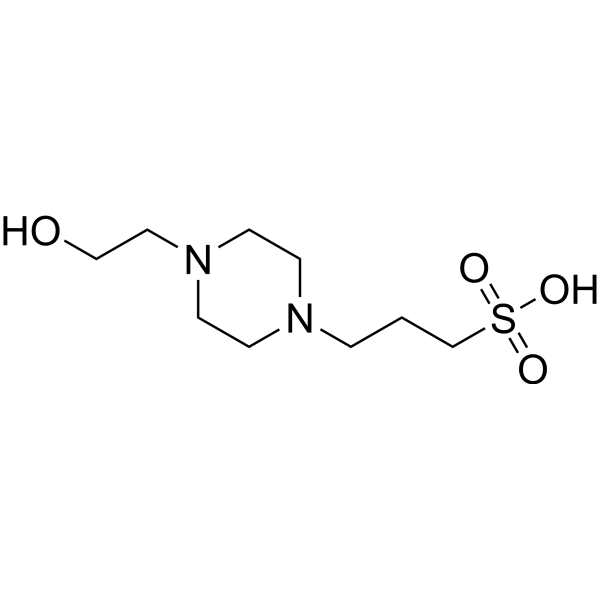
-
- HY-W019883
-
|
|
Biochemical Assay Reagents
|
Others
|
|
Dipotassium hydrogen phosphate is a highly water-soluble salt which is often used as a fertilizer, food additive and buffering agent. Dipotassium hydrogen phosphate can be used as an excipient, such as pH regulator, buffer. Pharmaceutical excipients, or pharmaceutical auxiliaries, refer to other chemical substances used in the pharmaceutical process other than pharmaceutical ingredients. Pharmaceutical excipients generally refer to inactive ingredients in pharmaceutical preparations, which can improve the stability, solubility and processability of pharmaceutical preparations. Pharmaceutical excipients also affect the absorption, distribution, metabolism, and elimination (ADME) processes of co-administered drugs .
|
-
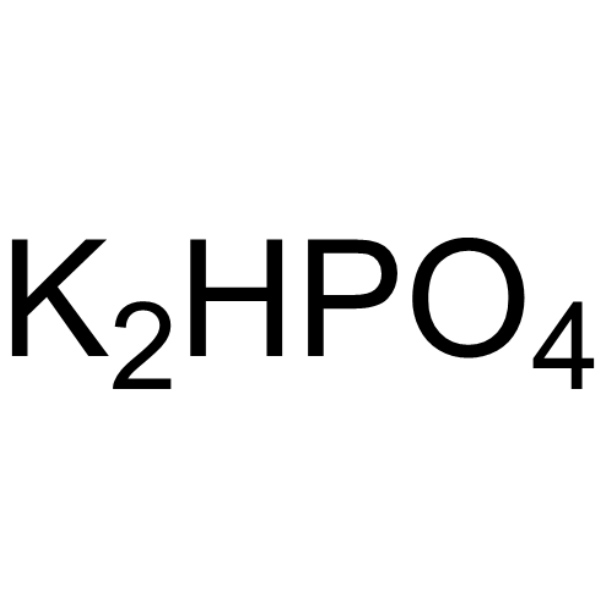
-
- HY-D0857S
-
|
|
Isotope-Labeled Compounds
|
Others
|
|
HEPES-d18 is the deuterium labeled HEPES[1]. HEPES, a nonvolatile zwitterionic chemical buffering agent, is broadly applied in cell culture. HEPES is effective at pH 6.8 to 8.2. HEPES is also a potent inducer of lysosome biogenesis[2][3][4].
|
-
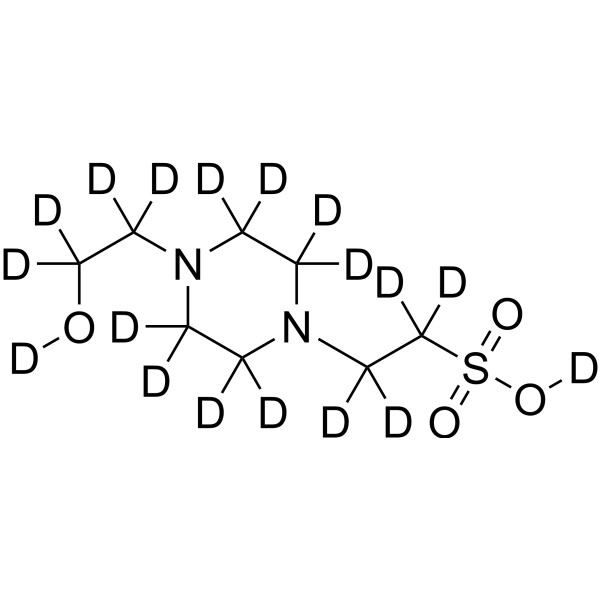
-
- HY-113354
-
|
|
Endogenous Metabolite
|
Neurological Disease
|
|
Anserine, a methylated form of Carnosine, is an orally active, natural Histidine-containing dipeptide found in skeletal muscle of vertebrates. Anserine is not cleaved by serum carnosinase and act as biochemical buffers, chelators, antioxidants, and anti-glycation agents. Anserine improves memory functions in Alzheimer's disease (AD)-model mice .
|
-
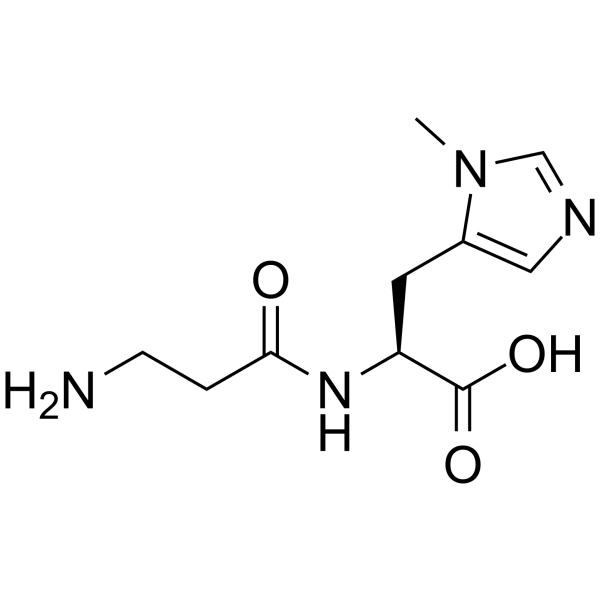
-
- HY-113354S
-
|
|
Endogenous Metabolite
|
Neurological Disease
|
|
Anserine-d4 is the deuterium labeled Anserine. Anserine, a methylated form of Carnosine, is an orally active, natural Histidine-containing dipeptide found in skeletal muscle of vertebrates. Anserine is not cleaved by serum carnosinase and act as biochemical buffers, chelators, antioxidants, and anti-glycation agents. Anserine improves memory functions in Alzheimer's disease (AD)-model mice[1][2].
|
-

-
- HY-13995B
-
|
|
Others
|
Metabolic Disease
|
|
Sevelamer carbonate is an orally active and non-calcium-based phosphate binding agent and used for the hyperphosphatemia of chronic kidney disease (CKD)research. Sevelamer carbonate effectively lowers serum phosphorus levels hile having minimal effect on serum calcium or serum chloride levels in vivo. Sevelamer carbonate is considered as an improved, buffered form of sevelamer (HY-13995) .
|
-

-
- HY-113354S1
-
|
|
Isotope-Labeled Compounds
|
Neurological Disease
|
|
Anserine-d4 hydrochloride is the deuterium labeled Anserine (HY-113354). Anserine, a methylated form of Carnosine, is an orally active, natural Histidine-containing dipeptide found in skeletal muscle of vertebrates. Anserine is not cleaved by serum carnosinase and act as biochemical buffers, chelators, antioxidants, and anti-glycation agents. Anserine improves memory functions in Alzheimer's disease (AD)-model mice .
|
-
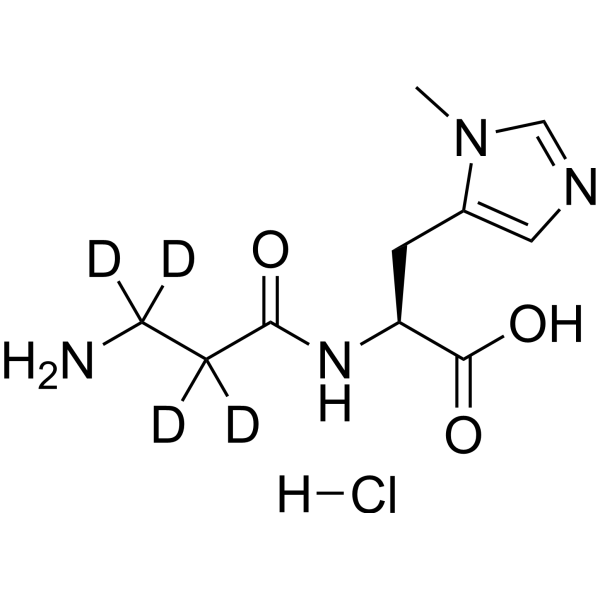
-
- HY-Y0756
-
|
Sodium hydrogen carbonate
|
Biochemical Assay Reagents
|
Others
|
|
Sodium bicarbonate, also known as baking soda, sodium bicarbonate, or sodium bicarbonate, is neutral to slightly alkaline. And it is susceptible to moisture and decomposition in the air. Sodium bicarbonate is widely used in food, pharmaceutical, cosmetics and other fields, the main uses include buffer, seasoning, disinfectant, pharmaceutical and proton gradient regulator. In the food industry, it is often used as a flour starter or leavening agent to make food swell up and become softer. Sodium bicarbonate is also commonly used as an antacid to suppress gastrointestinal disorders, neutralize stomach acid and reduce stomach discomfort.
|
-
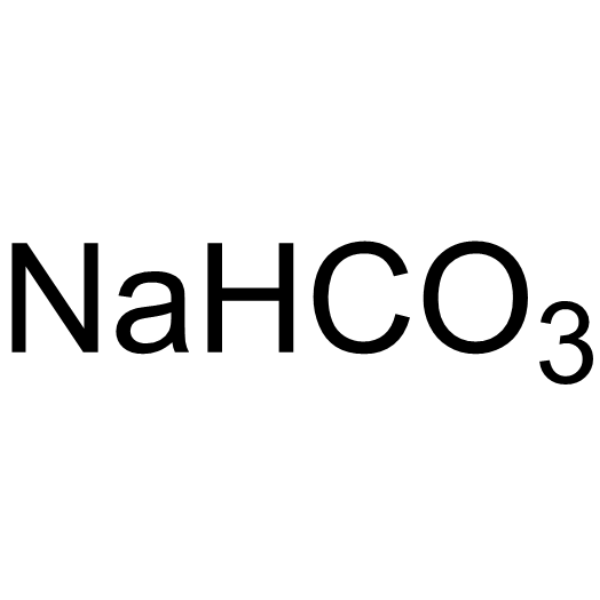
| Cat. No. |
Product Name |
Type |
-
- HY-D0871
-
|
N-Cyclohexyltaurine
|
Dyes
|
|
CHES (N-Cyclohexyltaurine) is a zwitterionic buffer. CHES can bind to hemagglutinin (HA) emulating with sialic acid (SA) and receptor binding site (RBS)-targeting broadly neutralizing antibodies .
|
| Cat. No. |
Product Name |
Type |
-
- HY-23430
-
|
|
Biochemical Assay Reagents
|
|
TES is a buffering agent (pKa=7.550 at 25°C). TES is one of the Good's buffers, the buffer capacity ranging pH 6.8-8.2 .
|
-
- HY-23430A
-
|
|
Biochemical Assay Reagents
|
|
TES sodium is a buffering agent (pKa=7.550 at 25°C). TES sodium is one of the Good's buffers, the buffer capacity ranging pH 6.8-8.2 .
|
-
- HY-D0859A
-
|
|
Biochemical Assay Reagents
|
|
MOPS sodium salt is commonly used as a buffering agent in biology. MOPS buffer can maintain the pH of mammalian cell culture media .
|
-
- HY-D0858B
-
|
2-Morpholinoethanesulphonic acid sodium salt
|
Biochemical Assay Reagents
|
|
MES (2-Morpholinoethanesulphonic acid) sodium salt is a buffering agent in biology and biochemistry. MES sodium salt is one of the Good's buffers, the buffer capacity ranging pH 5.5-7.0. MES sodium salt is broadly used to regulate pH value for plants culture medium, reagent solution, and physiological experiments .
|
-
- HY-W414406
-
|
|
Buffer Reagents
|
|
CABS is a zwitterionic piperazine buffer reagent, which can be used as a buffer reagent for wetting agents, pesticide emulsifiers, and dispersants, and has been used in fluorescent dyeing applications .
|
-
- HY-D0858
-
|
2-Morpholinoethanesulphonic acid
|
Biochemical Assay Reagents
|
|
MES (2-Morpholinoethanesulphonic acid) is a buffering agent in biology and biochemistry. MES is one of the Good's buffers, the buffer capacity ranging pH 5.5-7.0. MES is broadly used to regulate pH value for plants culture medium, reagent solution, and physiological experiments .
|
-
- HY-D0858A
-
|
2-Morpholinoethanesulphonic acid monohydrate
|
Biochemical Assay Reagents
|
|
MES (2-Morpholinoethanesulphonic acid) monohydrate is a buffering agent in biology and biochemistry. MES monohydrate is one of the Good's buffers, the buffer capacity ranging pH 5.5-7.0. MES monohydrate is broadly used to regulate pH value for plants culture medium, reagent solution, and physiological experiments .
|
-
- HY-D0858E
-
|
2-Morpholinoethanesulphonic acid potassium
|
Biochemical Assay Reagents
|
|
MES (2-Morpholinoethanesulphonic acid) potassium is a buffering agent in biology and biochemistry. MES potassium is one of the Good's buffers, the buffer capacity ranging pH 5.5-7.0. MES potassium is broadly used to regulate pH value for plants culture medium, reagent solution, and physiological experiments .
|
-
- HY-D0858C
-
|
2-Morpholinoethanesulphonic acid hydrate
|
Buffer Reagents
|
|
MES (2-Morpholinoethanesulphonic acid) hydrate is a buffering agent in biology and biochemistry. MES hydrate is one of the Good's buffers, the buffer capacity ranging pH 5.5-7.0. MES hydrate is broadly used to regulate pH value for plants culture medium, reagent solution, and physiological experiments .
|
-
- HY-D0875
-
|
1,4-Piperazinediethanesulfonic acid
|
Biochemical Assay Reagents
|
|
PIPES (1,4-Piperazinediethanesulfonic acid) is an important component of PIPES buffer agent used in biochemistry .
|
-
- HY-W040147
-
|
1,4-Piperazinediethanesulfonic acid disodium
|
Biochemical Assay Reagents
|
|
PIPES (1,4-Piperazinediethanesulfonic acid) disodium is an important component of PIPES buffer agent used in biochemistry .
|
-
- HY-W008600
-
|
|
Biochemical Assay Reagents
|
|
Sodium octane-1-sulfonate is an ion-pairing agent that can be used as a buffer in biochemical research and HPLC .
|
-
- HY-W014792
-
|
|
Biochemical Assay Reagents
|
|
Sodium heptane-1-sulfonate is an ion-pairing agent that can be used as a buffer in biochemical research and HPLC .
|
-
- HY-W016091
-
|
|
Biochemical Assay Reagents
|
|
Sodium heptane-1-sulfonate is an ion-pairing agent that can be used as a buffer in biochemical research and HPLC .
|
-
- HY-W094510
-
|
|
Biochemical Assay Reagents
|
|
Sodium pyrophosphate decahydrate can be as a buffering agent, a chelator and a hydrated salt nucleating agent. Sodium pyrophosphate decahydrate can also be used to a raw material for synthetic laundry scent additives .
|
-
- HY-Y0308E
-
|
Disodium hydrogen phosphate, for cell culture
|
Buffer Reagents
|
|
Sodium phosphate dibasic (Disodium hydrogen phosphate), for cell culture can be used as an excipient, such as buffer, chelating agent, can used for cell culture .
|
-
- HY-W643127
-
|
N-Tris(hydroxymethyl)methyl-4-aminobutanesulfonic acid
|
Buffer Reagents
|
|
TABS (N-Tris(hydroxymethyl)methyl-4-aminobutanesulfonic acid) is a zwitterionic chemical buffering agent, is broadly applied in cell culture .
|
-
- HY-W105704
-
|
|
Biochemical Assay Reagents
|
|
HEPBS is a zwitterionic buffering agent with a pH range (7.6-9.0) similar to that of biological systems. HEPBS can be used in the culture of cells .
|
-
- HY-D0871
-
|
N-Cyclohexyltaurine
|
Dyes
|
|
CHES (N-Cyclohexyltaurine) is a zwitterionic buffer. CHES can bind to hemagglutinin (HA) emulating with sialic acid (SA) and receptor binding site (RBS)-targeting broadly neutralizing antibodies .
|
-
- HY-D0857
-
HEPES
2 Publications Verification
|
Biochemical Assay Reagents
|
|
HEPES, a nonvolatile zwitterionic chemical buffering agent, is broadly applied in cell culture. HEPES is effective at pH 6.8 to 8.2. HEPES is also a potent inducer of lysosome biogenesis .
|
-
- HY-108535
-
|
|
Biochemical Assay Reagents
|
|
HEPES sodium, a nonvolatile zwitterionic chemical buffering agent, is broadly applied in cell culture. HEPES sodium is effective at pH 6.8 to 8.2. HEPES sodium is also a potent inducer of lysosome biogenesis .
|
-
- HY-D0873
-
|
EPPS
|
Biochemical Assay Reagents
|
|
HEPPS (EPPS) is a buffering agent with the useful pH range from 7.3 ~ 8.7. HEPPS reduces Aβ-aggregate-induced memory deficits and rescues cognitive deficits in mice. EPPS is orally active and penetrates the blood-brain barrier .
|
-
- HY-Y0756
-
|
Sodium hydrogen carbonate
|
Biochemical Assay Reagents
|
|
Sodium bicarbonate, also known as baking soda, sodium bicarbonate, or sodium bicarbonate, is neutral to slightly alkaline. And it is susceptible to moisture and decomposition in the air. Sodium bicarbonate is widely used in food, pharmaceutical, cosmetics and other fields, the main uses include buffer, seasoning, disinfectant, pharmaceutical and proton gradient regulator. In the food industry, it is often used as a flour starter or leavening agent to make food swell up and become softer. Sodium bicarbonate is also commonly used as an antacid to suppress gastrointestinal disorders, neutralize stomach acid and reduce stomach discomfort.
|
| Cat. No. |
Product Name |
Category |
Target |
Chemical Structure |
| Cat. No. |
Product Name |
Chemical Structure |
-
- HY-D0857S
-
|
|
|
HEPES-d18 is the deuterium labeled HEPES[1]. HEPES, a nonvolatile zwitterionic chemical buffering agent, is broadly applied in cell culture. HEPES is effective at pH 6.8 to 8.2. HEPES is also a potent inducer of lysosome biogenesis[2][3][4].
|
-

-
- HY-23430S
-
|
|
|
TES-d15 is the deuterium labeled TES[1]. TES is a buffering agent (pKa=7.550 at 25°C). TES is one of the Good's buffers, the buffer capacity ranging pH 6.8-8.2[2][3].
|
-

-
- HY-D0859S
-
|
|
|
MOPS-d15 is the deuterium labeled MOPS[1]. MOPS is commonly used as a buffering agent in biology. MOPS buffer can maintain the pH of mammalian cell culture media[2][3].
|
-

-
- HY-D0858S
-
|
|
|
MES-d13 is the deuterium labeled MES[1]. MES (2-Morpholinoethanesulphonic acid) is a buffering agent in biology and biochemistry. MES is one of the Good's buffers, the buffer capacity ranging pH 5.5-7.0. MES is broadly used to regulate pH value for plants culture medium, reagent solution, and physiological experiments[2][3].
|
-

-
- HY-D0875S
-
|
|
|
PIPES-d18 is the deuterium labeled PIPES[1]. PIPES (1,4-Piperazinediethanesulfonic acid) is an important component of PIPES buffer agent used in biochemistry[2].
|
-

-
- HY-113354S
-
|
|
|
Anserine-d4 is the deuterium labeled Anserine. Anserine, a methylated form of Carnosine, is an orally active, natural Histidine-containing dipeptide found in skeletal muscle of vertebrates. Anserine is not cleaved by serum carnosinase and act as biochemical buffers, chelators, antioxidants, and anti-glycation agents. Anserine improves memory functions in Alzheimer's disease (AD)-model mice[1][2].
|
-

-
- HY-113354S1
-
|
|
|
Anserine-d4 hydrochloride is the deuterium labeled Anserine (HY-113354). Anserine, a methylated form of Carnosine, is an orally active, natural Histidine-containing dipeptide found in skeletal muscle of vertebrates. Anserine is not cleaved by serum carnosinase and act as biochemical buffers, chelators, antioxidants, and anti-glycation agents. Anserine improves memory functions in Alzheimer's disease (AD)-model mice .
|
-

Your information is safe with us. * Required Fields.
Inquiry Information
- Product Name:
- Cat. No.:
- Quantity:
- MCE Japan Authorized Agent:













































